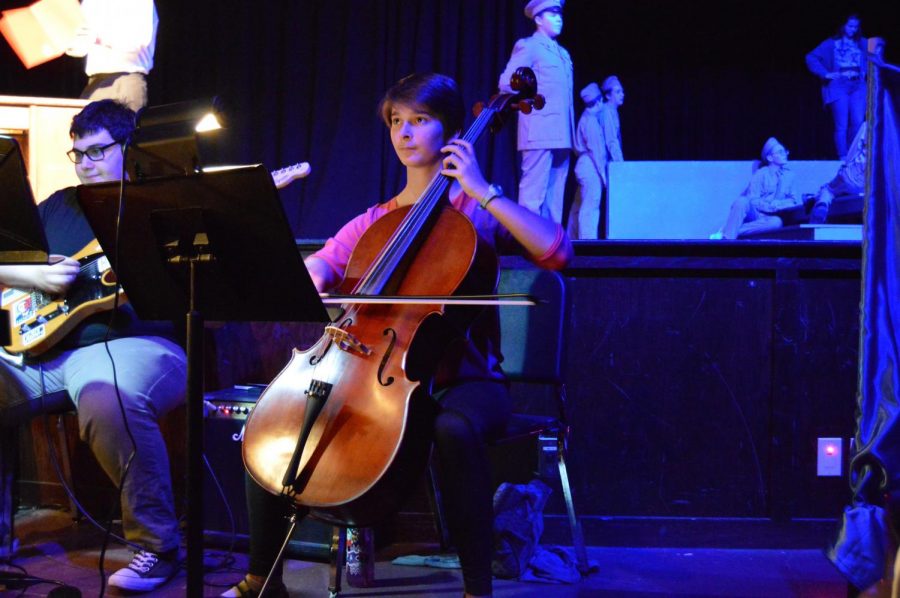Pit orchestra participates in theater musical
Orchestra students gain experience playing in small ensemble
Junior Greta Long plays the cello during a Big Fish rehearsal. Pit orchestra performed for both weekends of the musical.
December 7, 2017
Directed by Nate Kravetz, juniors Greta Long and Angelica Lopez, among others, performed in pit orchestra for the theater musical ‘Big Fish.’
According to Kravetz, pit orchestra is a part of the musical every year, playing the supporting music as the actors perform. He said teaching pit orchestra is a challenge because there is a lot of uncertainty and variables.
“There is the added challenge of not only getting them to play the music correctly, but also integrating them into a larger system of acting, dancing, cues from lights, cues from sound, cues from the stage and all being able to transfer that into a musical sequence,” Kravetz said. “There’s an added element of uncertain performance that comes with any time you do a musical.”
Kravetz said the cues he gives tell the players in pit orchestra when to play.
“I also give them certain cues if the actor onstage has a line that they say right before were supposed to play something. A lot of times I’ll have them write that down ahead of time so they know to listen for a certain phrase,” Kravetz said. “They’ll say ‘I have to go to the deli’ and then we play something. We have all that that written down so even if they don’t see my cue, they know that they’re supposed to be doing something right then.”
Junior Greta Long, who plays the cello in pit orchestra, said pit is different from regular orchestra because it requires more improvisation.
“Pit orchestra music is written for an entire band and orchestra, so you don’t get the melody as much, and it’s definitely a lot harder,” Long said. “There’s a lot more rhythmic things so it’s a lot more listening to the people around you and knowing when to come in. Because we are with the singers we have to kind of improvise sometimes if they come in wrong, so that’s definitely different.”
According to junior Angelica Lopez, pit orchestra involves more attention to the director and fluidity.
“There’s a lot of sight reading involved at first, and obviously you have to look at the conductor a lot because there’s these vamps where you have to continuously repeat a couple of measures, so you really have to watch so that you know when to go on,” Lopez said. “Apart from that it’s basically just like orchestra, except you have to be a lot more careful when you watch the conductor.”
According to Kravetz, Big fish went very well despite minor setbacks.
“I think (the Big Fish performances) went really well. There was plenty of curveballs we got, plenty of challenges, but that’s the way live theater is, that’s part of the deal. If you don’t want that, watch a DVD…, same as the professional level. Things happen. A light doesn’t come on or a person gets sick, or something like that,” Kravetz said.
Kravetz said the students in pit did a good job of reacting to problems that came up throughout the two weekends.
“The question is, what does the group do as a whole when that happens, and I thought we did really well with that,” Kravetz said. “We had plenty of curveballs and I thought that we handled them gracefully and professionally.”



